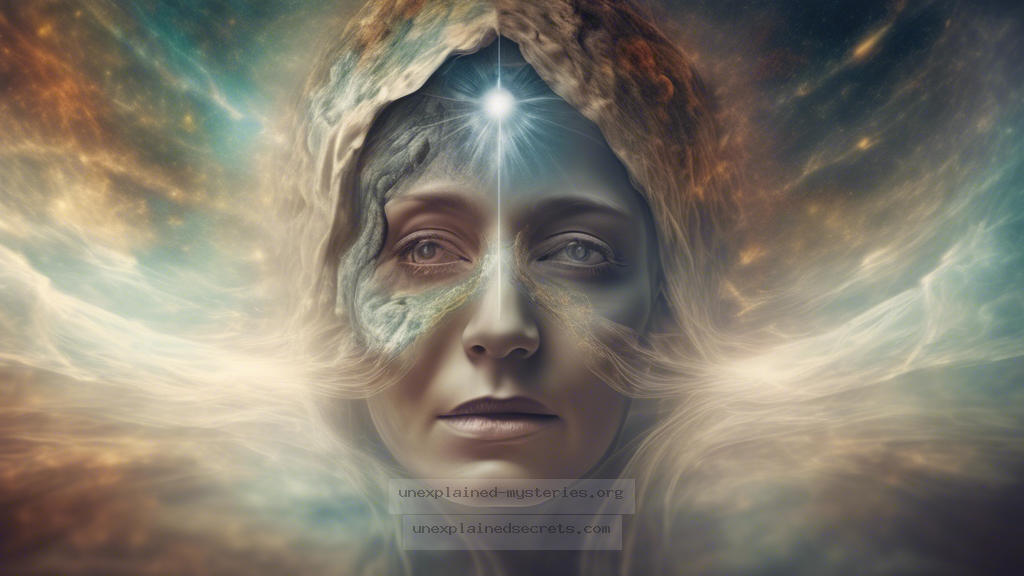What Happens to Consciousness After Clinical Death? Insights from Near-Death Experiences
What Happens to Consciousness After Clinical Death? Insights from Near-Death Experiences
The question of what happens to consciousness after clinical death has long captivated humanity’s imagination. Near-Death Experiences (NDEs) provide tantalizing glimpses into this mystery, as countless individuals report extraordinary encounters during moments when they were clinically dead or near death. These accounts have sparked debates among scientists, spiritual practitioners, and philosophers alike, raising profound questions about the nature of consciousness and existence beyond the physical realm. This inquiry not only challenges our understanding of life and death but also offers insights into the human experience, consciousness, and the potential for an afterlife. In this blog post, we will delve deeply into the mystery of NDEs and their implications for our understanding of consciousness, reality, and the afterlife.
The Historical Context of Near-Death Experiences
Near-Death Experiences have been documented throughout history, with accounts appearing in various cultures and religious texts. The phenomenon is not exclusive to modern times; ancient civilizations, including the Egyptians and Greeks, spoke of journeys to the afterlife. One of the earliest recorded cases can be traced back to the writings of Plato, who described tales of souls experiencing a journey after death. In the 20th century, the term “near-death experience” was popularized by Dr. Raymond Moody in his groundbreaking book “Life After Life” (1975), which compiled numerous case studies of individuals who reported profound experiences during clinical death.
These historical accounts serve as a foundation for understanding NDEs. As we explore the narratives from different eras, we find a consistent theme: individuals often describe feelings of peace, encounters with deceased loved ones, and a sense of detachment from their physical bodies. This continuity across time and culture raises intriguing questions about the universality of consciousness and the human experience of dying.
Core Concepts of Near-Death Experiences
At the heart of NDEs lies a series of common phenomena reported by individuals who have had these experiences. While each account is unique, many share similar elements, including:
- Out-of-body experiences (OBEs) where individuals report observing their physical bodies from an external perspective.
- Feelings of peace and joy, often described as the absence of pain or fear.
- Encounters with bright lights or beings of light, often perceived as divine or spiritual entities.
- Life reviews, where individuals reflect on the significant moments of their lives and the impact of their actions on others.
- Crossing a threshold or barrier that signifies a transition between life and death.
These elements suggest a structured experience, leading researchers to propose theories about the nature of consciousness and the potential for an afterlife. Some argue that NDEs indicate a form of consciousness that exists independently of the physical body, challenging traditional scientific views of the mind-brain relationship.
Scientific Research on Near-Death Experiences
In recent years, scientific interest in NDEs has increased, leading to various studies aimed at understanding the phenomenon. Researchers have employed a multidisciplinary approach, combining psychology, neuroscience, and even quantum physics to explore the nature of consciousness during these experiences.
One notable study conducted by Dr. Sam Parnia and his team at NYU Langone Medical Center investigated cardiac arrest patients who experienced NDEs. The researchers found that a significant number of patients reported vivid experiences during their clinical death, leading to questions about the brain’s role in producing such experiences. The study utilized advanced monitoring technology to record brain activity and assess consciousness during cardiac arrest, revealing intriguing insights into the mind’s capabilities during extreme states.
Additionally, Dr. Bruce Greyson, a leading researcher in the field of NDEs, developed the Greyson NDE Scale, which quantifies the depth of NDEs reported by individuals. His research indicates that NDEs can have lasting effects on individuals, including changes in personality, spiritual beliefs, and attitudes toward life and death.
Practical Implications of Near-Death Experiences
The implications of NDEs extend beyond mere curiosity; they can profoundly impact how individuals view life, death, and spirituality. Many people report that their NDEs led to a significant transformation in their values and priorities. Common changes include:
- A decreased fear of death, leading to a more fulfilling and present-oriented life.
- Increased compassion and empathy toward others, often accompanied by a desire to help those in need.
- A shift in spiritual beliefs, with many adopting a more open and inclusive perspective on spirituality.
These transformations can also influence interpersonal relationships, as individuals share their experiences with family and friends, fostering discussions about life, death, and what may lie beyond. This newfound awareness can lead to a greater sense of community and connection among those who have experienced NDEs and those who seek to understand them.
Alternative Perspectives on Near-Death Experiences
While NDEs are often viewed through a spiritual lens, alternative perspectives exist that seek to explain these experiences from a psychological or physiological standpoint. Some researchers propose that NDEs may result from a combination of neurological processes, such as the release of endorphins and other neurotransmitters during traumatic events, leading to altered states of consciousness.
Critics of the spiritual interpretation of NDEs argue that these experiences can be explained by brain activity, hallucinations, or the mind’s coping mechanisms in the face of death. For instance, the phenomenon of “tunnel vision,” often reported in NDEs, could be a result of the brain’s response to reduced blood flow and oxygen during near-death states.
While these alternative explanations offer valuable insights, they do not fully account for the consistency and depth of the experiences reported by individuals across different cultures. The ongoing debate between spiritual and scientific interpretations continues to fuel research and discussion in the field.
Common Misconceptions About Near-Death Experiences
Despite the growing body of research on NDEs, several misconceptions persist. Here are a few common misunderstandings:
- Myth: NDEs are purely hallucinations or fantasies.
- Fact: While some NDEs may share similarities with hallucinations, many individuals report highly structured and transformative experiences that often defy conventional explanations.
- Myth: NDEs are solely linked to religious beliefs.
- Fact: People from various cultural and religious backgrounds report NDEs, indicating that these experiences transcend specific belief systems.
- Myth: NDEs are rare occurrences.
- Fact: Studies suggest that a significant percentage of individuals who undergo near-death situations report some form of NDE, indicating that these experiences are more common than previously believed.
Best Practices for Investigating Near-Death Experiences
For those interested in exploring NDEs further, whether for personal understanding or academic research, several best practices can enhance the investigation process:
- Engage with firsthand accounts: Reading books, articles, and watching documentaries featuring NDE survivors can provide valuable insights into the transformative nature of these experiences.
- Empirical research: Collaborate with researchers conducting studies on NDEs to gather data and analyze trends in reported experiences.
- Participate in discussions: Join forums or communities focused on NDEs to engage with individuals who have had similar experiences and share insights.
- Consider interdisciplinary approaches: Explore perspectives from psychology, neuroscience, philosophy, and spirituality to develop a holistic understanding of NDEs.
Future Developments and Ongoing Research
The field of NDE research is evolving, with new studies and theories emerging regularly. As technology advances, researchers are finding innovative ways to study consciousness and its relationship to the brain. Future developments may include:
- Advanced imaging techniques to observe brain activity during near-death situations.
- Longitudinal studies that track individuals’ post-NDE experiences over time to assess lasting impacts on their lives.
- Cross-cultural studies to explore how different societies interpret and integrate NDEs into their belief systems.
As our understanding of consciousness deepens, the potential for new insights into the nature of reality and the afterlife continues to expand. The intersection of science and spirituality may ultimately reveal profound truths about existence and the human experience.
Conclusion
The question of what happens to consciousness after clinical death remains one of life’s great mysteries. Near-Death Experiences offer a unique lens through which we can explore the intricacies of consciousness, identity, and the possibility of life beyond death. Through historical accounts, scientific research, and personal narratives, we gain insight into the transformative power of these experiences and the profound implications they hold for our understanding of existence.
As we continue to investigate this enigmatic phenomenon, it is essential to approach the subject with an open mind, recognizing the validity of both spiritual and scientific perspectives. In doing so, we may find that the mysteries of consciousness and the afterlife are not only fascinating topics of inquiry but also deeply interconnected facets of the human experience that invite us to reflect on our own beliefs about life and death.
Other Articles
Recent Posts
- What Happened to Flight MH370? The Conspiracy Theories That Still Haunt Us
- What Secrets Lurk Within the Walls of the Infamous Trans-Allegheny Lunatic Asylum?
- What Evidence Supports the Existence of Bigfoot in the Pacific Northwest?
- What Happened to the Indus Valley Civilization? Unraveling the Mysteries of Ancient Urban Life
- Can Telepathy Be Scientifically Proven Through Laboratory Evidence?







